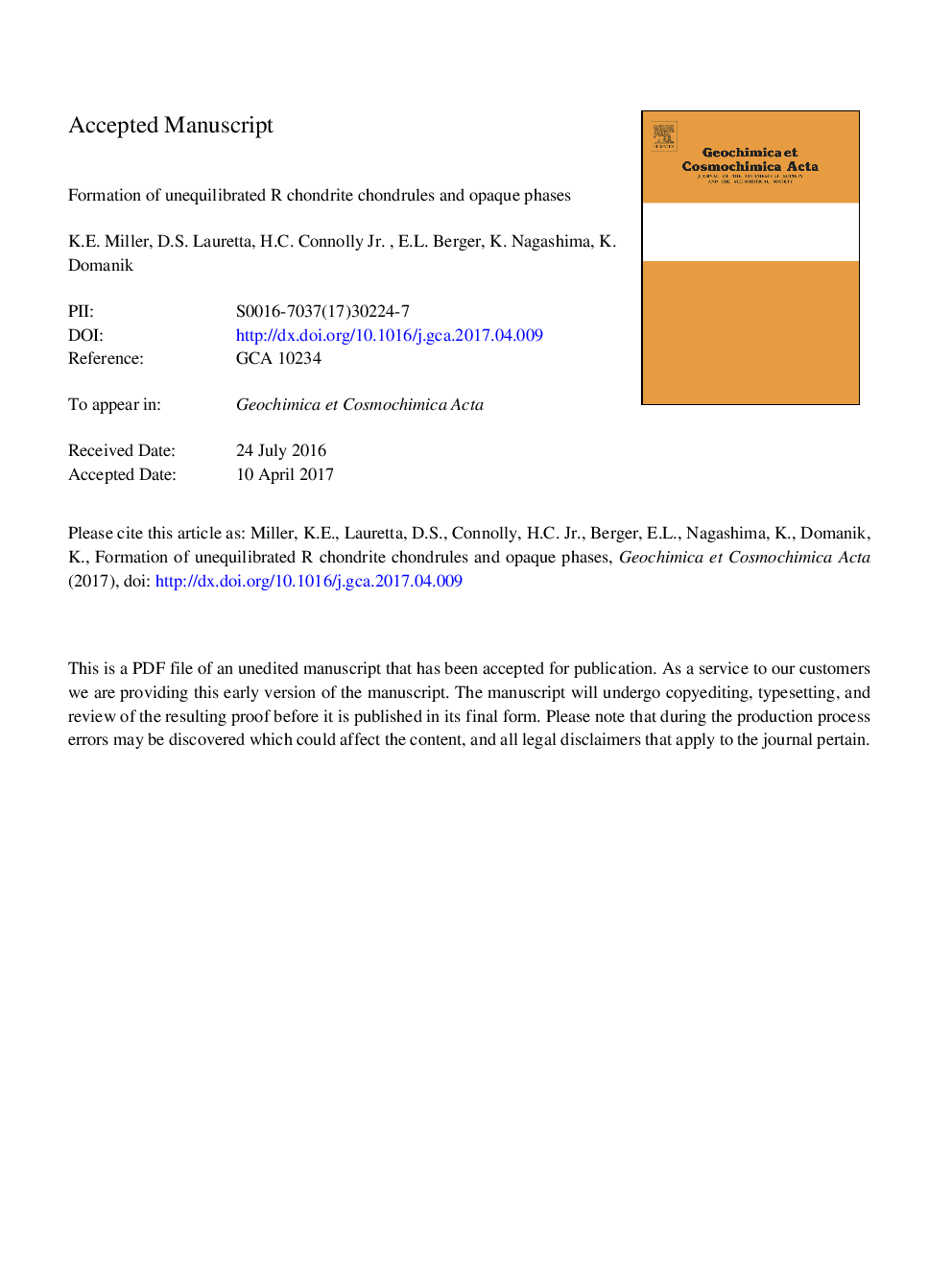| Article ID | Journal | Published Year | Pages | File Type |
|---|---|---|---|---|
| 5783275 | Geochimica et Cosmochimica Acta | 2017 | 59 Pages |
Abstract
We hypothesize that sulfide nodules formed via pre-accretionary melt processes. During chondrule formation, precursors composed of a mixture of silicate and sulfide material were heated to form immiscible melt droplets, which separated and cooled to form Si-rich chondrules and S-rich nodules. Sulfide melt was stabilized by a high total pressure (â¼1 atm) in a dust- or ice-enriched environment. Heating of this material contributed to a high fS2 (2 Ã 10â3 atm at 1138 °C), and high fO2 (IW - 1 to IW - 4), in an environment with peak temperatures between 1539 °C and 1750 °C. Oxygen isotopic compositions in this region were similar to those recorded by the LL-chondrite chondrules.
Keywords
Related Topics
Physical Sciences and Engineering
Earth and Planetary Sciences
Geochemistry and Petrology
Authors
K.E. Miller, D.S. Lauretta, H.C. Jr., E.L. Berger, K. Nagashima, K. Domanik,
